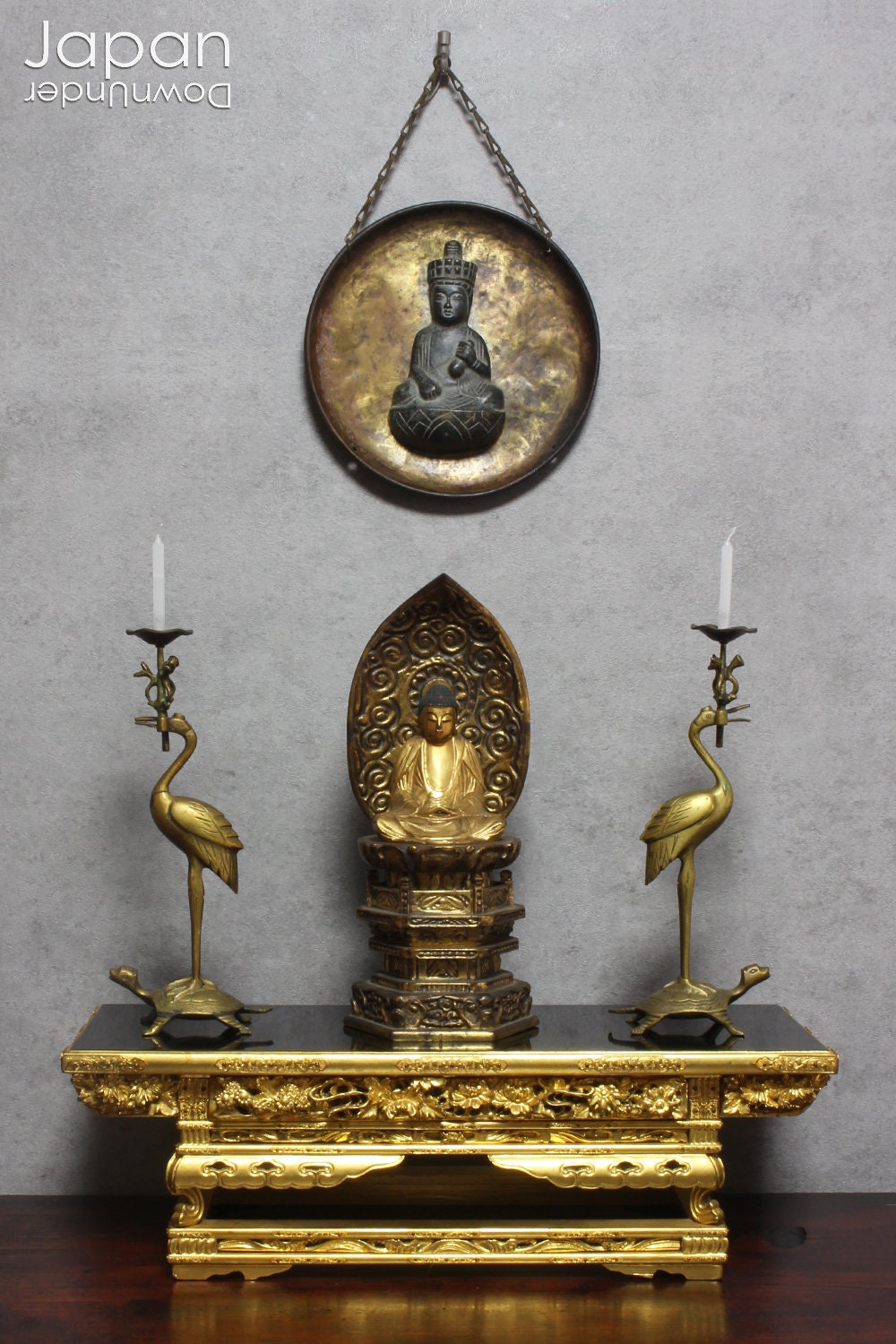My Store
handcrafted kannon decorative plaque to remove hardship
handcrafted kannon decorative plaque to remove hardship
Couldn't load pickup availability
Love Japanese Style like We Do
Add a touch of serenity to your space with this wonderful, one-of-a-kind, upcycled vintage amulet. The beautiful hanging plaque features a Kannon who helps remove hardship from your life. Truly a gorgeous piece with powerful, positive energy.
The religious art is made in the form of an old Kakebotoke, a hanging circular plaque with a small, raised image of a Buddhist or Shinto deity. Found only in Japan, these votive plaques appeared around the Kamakura period and were hung on outside eaves for worship at temples and shrines.
Upcycled from vintage religious items, a small cast bronze god, attached to an old tarnished copper hanging plate, completes the one- of-a-kind kakebotoke. The small deity, Juichimen Kannon, is said to remove hardships from one’s life and to protect one from illness.
A wonderfully unique piece to compliment any religious decor or meditation space.
- plate measures 18 cm (7.1”) in diameter.
- kannon measures 13 cm (5.1”) tall x 7 cm (2.8”) across.
- weighs 300gm.
(listing for hanging plaque only)
SHIPPING INFORMATION
- please read our shipping notes in shipping policy.
- we use recycle packaging wherever possible and wrap for safety, rather than appearance!
ABOUT OUR VINTAGE, ANTIQUE AND OTHER ITEMS
We list pieces we feel are worthy of display. There may be scratches, dents, fading and signs of wear and tear. We try to explain the condition of each item exactly, but may miss something.
Information regarding the item and its age is obtained from dealers and our personal research. We do our best to give you the correct information but please be aware that we cannot guarantee this information.
Please message us prior to purchase with any questions you may have about our products.
JUICHIMEN KANNON
Juichimen Kannon (Eleven-headed Kannon), is an important bodhisattva in the Esoteric schools of Buddhism. The Kannon is seen as performing the pious act of removing all hardships from living things due to its deep mercy, and often appears in the form of a goddess. It is believed to protect people from illness and help them secure food and wealth.
The eleven heads set atop the kannon’s main head have a range of expressions, including anger, laughter, compassion and tranquility. There are several interpretations of why there are eleven heads, including the belief that the lower ten represent the stages on the path to enlightenment, while the uppermost represents buddhahood.
According to 'Juichimen Shinjushin-kyo Sutra,' the Kannon’s right hand, which is hanging down, holds a beadroll and the left hand holds a vase with a red lotus in it. The beadroll in the right hand is often omitted.
KAKEBOTOKE
Kakebotoke, or hanging Buddhas, were usually made from a round bronze, copper, or sometimes wood plate with an image of a Buddhist or Shinto deity, either separately attached or created by repousse (hammered from the rear). The round plaques were about 40 cm in diameter and were hung under the eaves of temples and shrines where they could be seen and worshipped by multiple people at once.
Kakebotoke came into existence in the Kamakura period (1185–1333) after the practice of enshrining Buddhist and Shintoist deities under the same roof started. The votive plaque occupies a peculiar position among religious art objects because it was produced in this form only in Japan and developed in a unique way. The shape and origin of the votive plaque seems to have been closely related to circular, polished, bronze mirrors and the special ritual in which the actual Buddhist image was reflected in a mirror.
Kakebotoke, with a secret Buddhist statue, not to be shown to the public, were also put up in front of a temple. The votive plaques with a copy of the secret Buddha statue, sometimes up to 50 cm in diameter, became the object of veneration. Since they were quite often stolen they were later hung up high in the inner sanctuary to prevent theft.
Share










